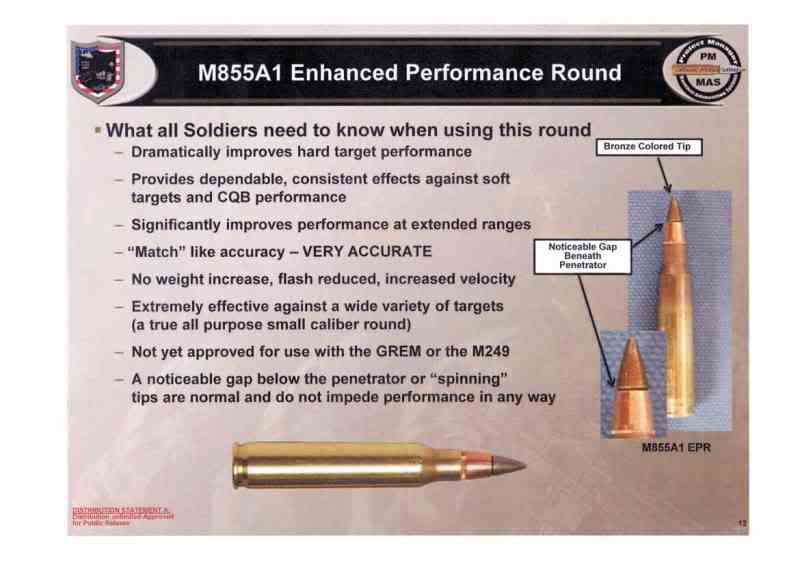I want to dedicate this short thread to M855A1 Enhanced Performance Round(EPR) 5.56.
EPR is probably the best general-purpose 5.56 rifle round in existence right now, with performance equalling or EXCEEDING 7.62x51mm M80 ball.🧵


EPR is probably the best general-purpose 5.56 rifle round in existence right now, with performance equalling or EXCEEDING 7.62x51mm M80 ball.🧵


M855 (SS109) has legendarily inconsistent performance at range. Most of its performance comes from yaw instability, which primarily occurs at short range.
Without yaw, it can pass harmlessly through a target, which was a significant issue encountered in Afghanistan.


Without yaw, it can pass harmlessly through a target, which was a significant issue encountered in Afghanistan.


Partially in response to these issues in Iraq and especially Afghanistan, the U.S. Army developed M855A1 EPR(the other impetus was providing a low-lead projectile to reduce environmental impacts).
The EPR projectile layout may be one of the greatest developments in modern small arms technology.
While my expertise is not in small arms technology, the improvements are well-documented.
While my expertise is not in small arms technology, the improvements are well-documented.

The first order of business was to decouple performance at range from yaw. Though it still yaws, it yaws far less and is not impacted by a lack of yaw during flight. 

Additionally, due to the construction of the projectile (drawn copper jacket around the back rather than over the front), accuracy is far higher than M855. 

Terminal effects and barrier penetration, though, are the greatest strengths of EPR. They wanted the projectile to stop as early in a soft target as possible, but not to stop in a hard target. 

The results are incredible. The consistency is far, far higher than M855, and barrier penetration at range is at least doubled.
M855A1 has superior barrier penetration to 7.62x51mm M80 Ball. Let that sink in for a minute.




M855A1 has superior barrier penetration to 7.62x51mm M80 Ball. Let that sink in for a minute.




However, it's not JUST barrier penetration that is better than M80. EPR's soft target performance is ALSO better than that of M80. 

I won't go into details because I know not all who follow me are interested in small arms (and details can be grisly), but the bottom line is that EPR stops quickly and consistently in soft targets better than almost any 5.56 to date (ideal) WITHOUT being stopped by hard targets.
The feedback from soldiers was overwhelmingly positive. The delta between 855 and 855A1 is night and day. 

What is so critical is that the EPR design has been able to properly harness the effectiveness of 5.56 (and it scales to other calibers well), and can provide, for the first time, a true all-purpose small-caliber round. 

Until this point, most rifle caliber projectiles have required trade-offs to achieve performance, but not the M855A1 EPR. It is a class leader in all respects.
• • •
Missing some Tweet in this thread? You can try to
force a refresh



















